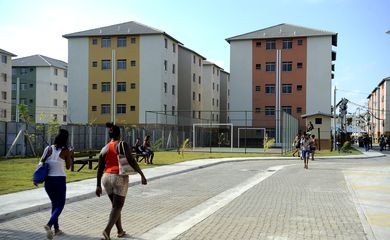One in five Brazilians live in rented homes

One in five people in Brazil live in rented accommodation. In percentage terms, this ratio—12.3 percent in 2000—has been growing ever since and reached 20.9 percent in 2022. The data come from a preliminary study from the 2022 demographic census released Thursday (Dec. 12) by the statistics bureau IBGE.

Most rented households are occupied by people who live alone (27.8%) or single-parent families (35.8%), i.e. where only one parent is responsible for the children—mostly the mother.
“It’s difficult to interpret the causality behind this transformation from the census alone, but what we can say is that it’s a national phenomenon,” census analyst Bruno Mandelli noted.
“Traditionally, in Brazil, renting is more common in high-income areas. So the Federal District [and the states of] São Paulo and Santa Catarina have had a higher proportion of people living in rented homes. But we can see an increase from 2010 levels countrywide,” he reported.
Profile
Renting is also reported to be young people’s option of choice. The proportion of rented homes shows a significant surge from the 15 to 19 age group to the 20 to 24 age group, reaching the highest level for people aged 25 to 29 (30.3 percent of this age group live in rented homes).
“These age groups coincide with ages typical of processes often associated with young people leaving their parents’ home, like entering the job market or going on to higher education. In the following groups, the proportion gradually decreases, until it reaches the lowest value, 9.2 percent, in the highest age group (70 years and older),” the text reads.
The survey covers occupied permanent private households. It does not include residents of makeshift or collective homes, or homes used occasionally or vacant.
As per the census data, of the 72.5 million permanent private households occupied in Brazil in 2022, 51.6 million were owned by one of the residents, which corresponds to 71.3 percent of the permanent private households occupied.
In relation to the Brazilian population, of the 202.1 million residents of permanent private homes in 2022, 146.9 million lived in their own homes—adding up to 72.7 percent.
Preliminary results
This is the first release of the sample questionnaire for the 2022 demographic census. The questionnaire was applied to 10 percent of the population, and the data are yet to be weighted to make them representative of the Brazilian population. This weighting has not yet been fully defined, which is why Thursday’s release is still preliminary.
The definition of the weighting areas will still be subject to consultation with the municipalities, in order to ensure that the areas are in line with public policy planning. Once this has been defined, the final data will be released.





